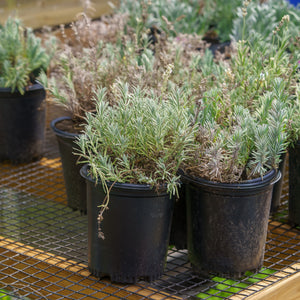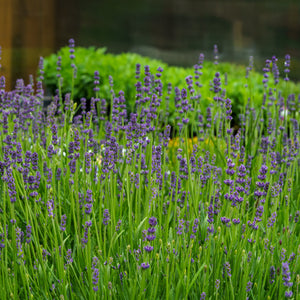The Lavandula Guide
Lavender, scientifically known as Lavandula, is a fragrant, drought-tolerant perennial beloved for its silvery foliage, spiked blooms, and soothing scent. It’s equally at home in herb gardens, cottage borders, and modern landscapes, offering visual beauty and a host of practical benefits. As both ornamental and culinary herb, lavender is a timeless favorite among gardeners and pollinators alike.
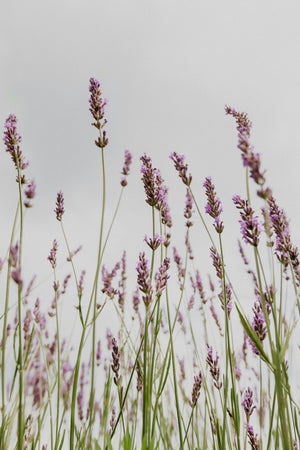
About
Lavender is part of the Lamiaceae (mint) family and is native to the Mediterranean. It includes several main species, with Lavandula angustifolia (English lavender) and Lavandula x intermedia (lavandin) being the most common in ornamental and herbal uses.
- Lavandula angustifolia cultivars like 'Hidcote', 'Munstead', and 'Sweet Romance' are compact, cold-hardy, and ideal for borders or low hedges.
- Lavandula intermedia types such as 'Grosso', 'Provence', and 'Phenomenal' are taller, with longer flower spikes and a strong scent, excellent for large plantings and harvesting.
- Modern selections like 'Ellagance Purple', 'Blue Cushion', and 'Imperial Gem' combine rich color with tight, bushy form.
- 'Sensational' and 'Essence Purple' are bred for heat resistance and prolonged bloom time.
Lavender’s fine-textured foliage ranges from gray-green to silvery white, with blooms from pale lilac to deep purple. It attracts bees, butterflies, and beneficial insects while repelling deer and rabbits with its aromatic oils.
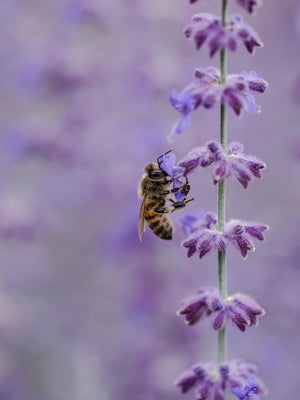
PLANTING
Lavender thrives in sunny, dry locations and rewards gardeners who replicate its native conditions:
- USDA Hardiness Zones: Most L. angustifolia cultivars are hardy in Zones 5–9. L. intermedia varieties prefer Zones 6–9.
- Soil: Well-drained, sandy or rocky soil with neutral to slightly alkaline pH. Avoid wet or clay-heavy conditions.
- Sunlight: Full sun (at least 6 hours daily) is essential for strong flowering and compact growth.
- Spacing: Plant 18–24 inches apart for small types, 24–36 inches for larger varieties like 'Grosso'.
- Planting Time: Plant in spring after danger of frost has passed, or in early fall in warmer zones.
Amend soil with lime if needed to raise pH, and avoid mulching too close to the crown to prevent moisture retention.
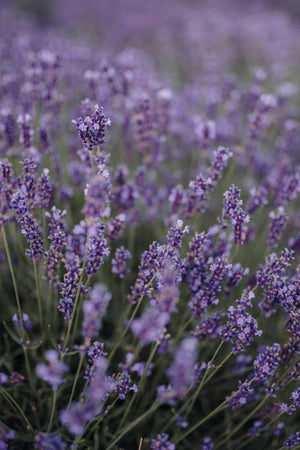
CARE
Lavender is easy to maintain once established, thriving on minimal intervention:
- Watering: Water regularly during the first growing season. Once established, lavender prefers dry conditions and resents overwatering.
- Fertilizing: Apply compost or a light dose of low-nitrogen fertilizer in early spring. Over-fertilization reduces oil content and bloom.
- Pruning: Shear plants back by one-third after flowering to maintain shape and promote dense growth. In early spring, prune lightly to remove winter damage.
- Pests & Diseases: Lavender is generally pest- and disease-resistant. Ensure good air circulation to prevent fungal issues like root rot or leaf spot.
Good drainage and a sunny location are the two most important factors in lavender longevity and performance.
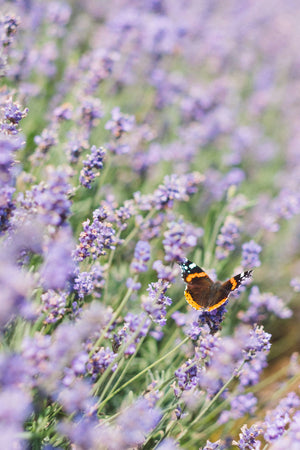
HOW TO USE
Lavender is valued for its beauty, aroma, and versatility, and fits well into many design schemes:
- Borders & Edging: Low-growing types like 'Super Bleu' and 'Dilly Dilly' are perfect for neat garden edges or pathways.
- Mass Plantings: Use 'Phenomenal', 'Provence', or 'Grosso' in drifts for color, scent, and pollinator support.
- Rock Gardens & Slopes: Plant on dry hillsides or gravel beds where drainage is ideal.
- Containers: Compact varieties like 'Blue Cushion' or 'Sweet Romance' thrive in sunny pots with well-draining mix.
- Herb & Cutting Gardens: Harvest stems for bouquets, dried arrangements, or culinary use.
Lavender pairs well with rosemary, sedum, coreopsis, or ornamental grasses for a sun-loving, drought-tolerant planting.
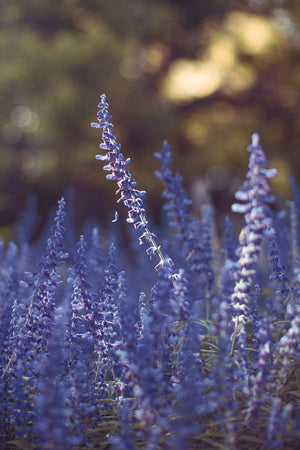
COMMON QUESTIONS
- How to grow Lavandula? Plant in full sun with well-draining soil. Water sparingly and prune annually to maintain shape and vigor.
- Is Lavandula angustifolia edible? Yes, L. angustifolia is commonly used in culinary applications like teas, baked goods, and herb blends.
- What is Lavandula? Lavandula is the genus name for lavender, a Mediterranean herb prized for its fragrance, flowers, and foliage.
- Is Lavandula lavender? Yes, Lavandula is the botanical name for all lavender plants.
- How tall does Lavandula grow? Heights range from 12 inches ('Hidcote') to over 36 inches ('Grosso', 'Phenomenal'), depending on cultivar.
- How to care for Lavandula? Provide full sun, well-draining soil, minimal water, and annual pruning for best performance.
- Is Lavandula toxic to cats? Lavender may cause mild GI upset in cats if ingested in quantity.
- Is Lavandula toxic to dogs? Mildly toxic in large amounts; it can cause nausea or vomiting in dogs if consumed.
- Do deer eat Lavandula? No, lavender is deer-resistant due to its strong fragrance.
- Do rabbits eat Lavandula? Rarely. Lavender’s aromatic oils tend to deter rabbits from browsing.
Conclusion
Lavender is an indispensable perennial for gardeners seeking fragrance, pollinator appeal, and low-maintenance beauty. Its sculptural form, drought resistance, and versatility across design styles—from formal to naturalistic—make it a top choice for sunny gardens. With cultivars suited to every space and climate, lavender brings elegance, aroma, and ecological value to any outdoor setting.
The Lavandula Collection
Sold Out
Sold Out
Sold Out
Sold Out
Sold Out


